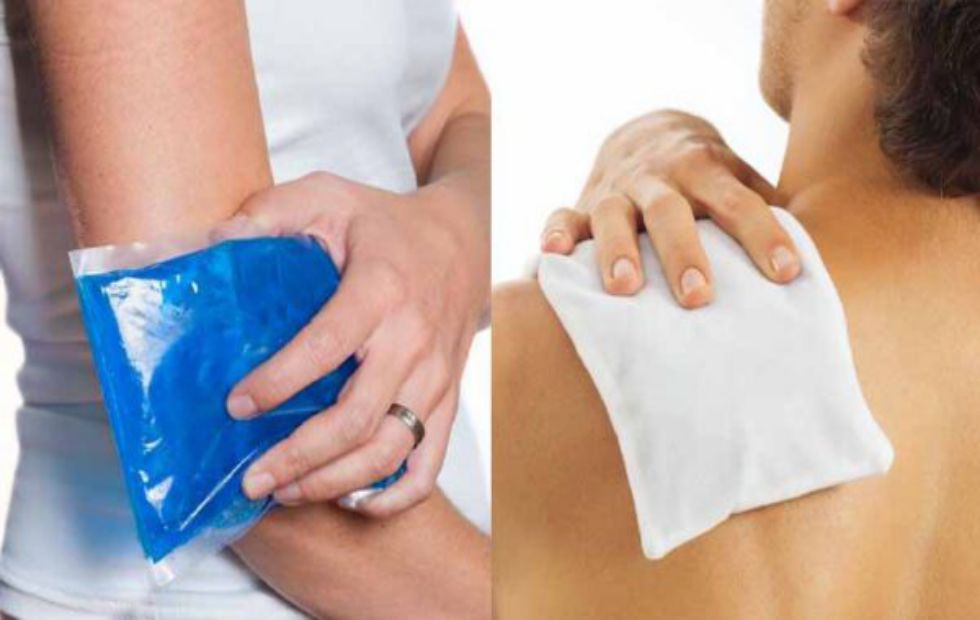Dealing with neck pain can be a frustrating and debilitating experience. Whether it is caused by an injury, muscle tension, or chronic pain, finding effective relief is crucial. Hot and cold therapy has long been used as a natural and non-invasive method to alleviate neck pain. However, determining when to use hot therapy or cold therapy can be confusing. In this article, we will explore the benefits of hot and cold therapy, their specific uses, and when it is appropriate to seek medical attention for neck pain.
The Benefits of Hot and Cold Therapy
Hot therapy and cold therapy have distinct effects on the body, and understanding their benefits can help determine which one is best for your specific condition. Both hot and cold therapy can help alleviate pain, reduce inflammation, and promote healing, but they have different applications. While using these therapies, maintaining a comfortable body temperature is crucial. A blanket can provide additional warmth and comfort during cold therapy sessions, enhancing the therapeutic experience. Consider the option to пледи to ensure your comfort and maximize the benefits of your chosen therapy.
Cold Therapy for Acute Injuries and Sudden Onset Pain
Cold therapy, also known as cryotherapy, involves using ice or frozen gel packs to reduce swelling and numb the affected area. It works by constricting blood vessels, reducing blood flow, and decreasing tissue metabolism. Cold therapy is particularly effective for acute neck injuries, such as whiplash, and sudden onset pain.
When applied immediately after an injury, cold therapy can help minimize swelling, inflammation, and pain. It numbs the affected area, providing immediate relief. Cold therapy is also beneficial for soothing muscle spasms and reducing the intensity of sharp pain. If you experience sudden neck pain or have recently suffered an injury, applying an ice compress for about 20 minutes several times a day can help alleviate discomfort and promote healing.
Hot Therapy for Chronic Pain and Stiffness
Hot therapy, also referred to as thermotherapy, involves the application of heat to the affected area to improve blood flow, relax muscles, and reduce pain. Heat therapy can be particularly beneficial for chronic neck stiffness and tension.
When applied to the neck, heat increases circulation, allowing more oxygen and nutrients to reach the affected muscles. This promotes healing, reduces inflammation, and relaxes tight muscles. Heat therapy is also highly effective as a prelude to stretching or exercise, as it helps warm up muscles, making them more pliable and less prone to injury.
Alternating Between Hot and Cold Therapy
While each therapy has its specific benefits, there are instances where alternating between hot and cold therapy can provide the best relief. Alternating between the two can maximize their combined benefits and help address different aspects of neck pain.
For example, after an acute injury or sudden onset pain, applying ice for the first 48 hours can help reduce swelling and inflammation. Once the swelling has subsided, hot therapy can be introduced to address any lingering tension or stiffness. Alternating between hot and cold therapy can create a synergistic effect, providing comprehensive relief for neck pain.
When to Seek Medical Attention
Although hot and cold therapy can be effective in managing neck pain, there are cases where medical attention is necessary. Neck pain is the fourth leading cause of disability, and if it significantly affects your quality of life, it is crucial to consult a healthcare professional.
You should seek immediate medical attention if you experience any of the following symptoms in conjunction with neck pain:
- Tingling, numbness, or weakness in one arm or hand: These symptoms may indicate nerve impingement or damage, which requires prompt medical evaluation.
- Neck pain caused by a sudden injury: If your neck pain stems from a traumatic event such as a car accident or sports injury, it is essential to seek medical evaluation to rule out any serious underlying damage.
- Lack of improvement after a week of self-care: If your neck pain persists or worsens despite self-care measures such as rest, heat or ice therapy, and over-the-counter pain relievers, it may indicate an underlying condition that requires medical attention.
- Pain worsens when lying down or interferes with sleep: This could be a sign of a more severe issue, such as a herniated disc or spinal misalignment, and should be evaluated by a healthcare professional.
- Loss of bowel or bladder control, difficulty walking or balancing: These symptoms may indicate a serious spinal cord or nerve problem and should be treated as a medical emergency.
Other Methods to Relieve Neck Pain
In addition to hot and cold therapy, there are several other methods that can aid in relieving neck pain:
- Over-the-counter pain relievers: Non-steroidal anti-inflammatory drugs (NSAIDs) like ibuprofen can help reduce inflammation and alleviate pain.
- Gentle stretching exercises: Targeted stretching exercises can help loosen tight neck muscles and improve flexibility. Consult with a physical therapist or healthcare professional for a personalized stretching routine.
- Yoga for neck pain: Yoga combines stretching, strengthening, and relaxation techniques, making it an effective approach for managing neck pain. Specific yoga poses targeting the neck and shoulder area can help alleviate muscle tension and improve posture.
- Physical therapy: A physical therapist can design a personalized treatment plan that includes exercises, manual therapy, and modalities such as heat or cold therapy to address your specific neck pain.
- Massage therapy: Professional massage treatments can help relax tight muscles, reduce pain, and improve circulation in the neck area.
- Chiropractic care: Chiropractic adjustments and spinal manipulations can help realign the spine, alleviate pressure on nerves, and improve neck mobility.
- Acupuncture: Traditional Chinese medicine technique involving the insertion of thin needles at specific points on the body to promote healing and alleviate pain.
- Stress management and relaxation techniques: Chronic stress can contribute to muscle tension and neck pain. Learning relaxation techniques such as deep breathing, meditation, and mindfulness can help reduce stress levels and relieve neck pain.
- Maintaining proper posture: Poor posture can strain the neck muscles and lead to pain. Maintaining a good posture while sitting, standing, and performing daily activities can help prevent neck pain.
- Supportive pillow and firm mattress: Using a supportive pillow that keeps your neck and head aligned with your spine can help reduce strain and alleviate neck pain. Similarly, sleeping on a firm mattress can provide better support and comfort.
- Taking regular breaks during sedentary activities: If you spend long periods sitting or performing repetitive activities, taking regular breaks to stretch and move around can help prevent muscle tension and reduce the risk of developing neck pain.
Hot and cold therapy can be effective methods for relieving neck pain, depending on your specific situation. Cold therapy is recommended for acute injuries, sudden onset pain, and swelling, as it reduces inflammation and provides immediate relief. Hot therapy is ideal for chronic stiffness, tight muscles, and to improve circulation. However, it is important to listen to your body and choose the therapy that feels best for your unique situation.
If neck pain persists or worsens despite self-care measures, it is advisable to seek medical attention. Certain symptoms, such as tingling, numbness, weakness in one arm or hand, or loss of bowel or bladder control, should prompt immediate medical evaluation.
In addition to hot and cold therapy, there are various other methods to alleviate neck pain, including over-the-counter pain relievers, stretches, yoga, physical therapy, massage therapy, chiropractic care, acupuncture, stress management techniques, and maintaining proper posture. Implementing these strategies can help you manage neck pain effectively and improve your overall quality of life. Always prioritize your health and consult with a healthcare professional for personalized advice and treatment.




